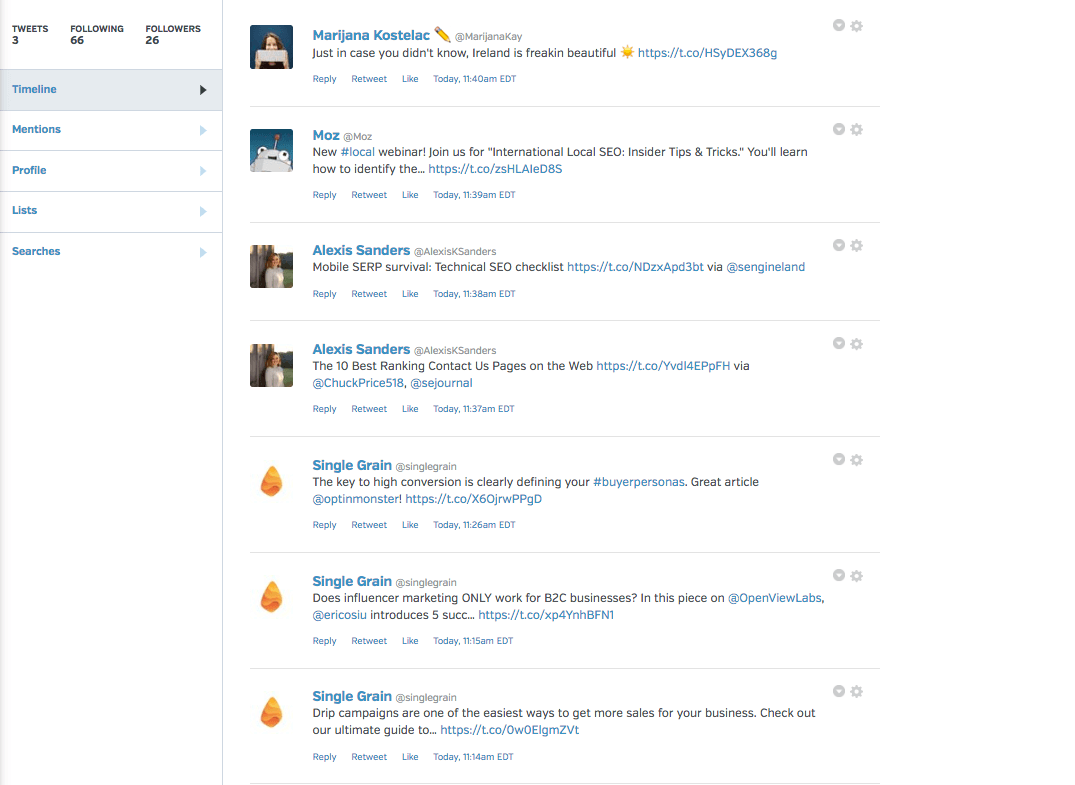Now that social signals are taken into account by search engines and Google is cracking down on content farms, it’s more important than ever to pay attention to quality content and social media as part of your SEO efforts and your entire marketing plan.
Research shows that this works. Marketers working in social reported a 27% conversion rate for organic search traffic. Those not using social media reported just a 17% conversion rate. Combining the reputation, community and trust-building aspects of social media with the conversion power of SEO seems to be the way to make the most of your marketing efforts.
How do you do this? In particular, people seem to paying a lot of attention to the power of ReTweets on links in the Google algorithm. Looking at details like the timing of Tweets and language used in Tweets can give you that extra edge. But, at the end of the day, remember this:
People. Share. Good. Content.
Over the past few months I really buckled down and focused on content in a different way. My strategy was based on monitoring industry news and conversations on Twitter. We definitely saw an increase in blog traffic and people coming to the website from the blog and performing key activities on our site once they got there. Here’s how you can do what I did.
1. Identify your target audience
My content strategy was the result of a business pivot that helped me focus on targeting a specific set of users. I picked a few Twitter accounts that targeted our audience already and set up searches to see what their communities were talking about — what hashtags they used, what blogs they linked to and what questions they were asking. This helped me make sure I was subscribing to the right blogs and creating the right search terms.
I have a couple of Google Reader folders. One is blog posts from our actual community members, one is content that I see them tweeting a lot (stuff our target audience reads), and then I have my own stuff like… okay, I hate to admit this, but… Style Me Pretty. (There I said it. Now back to our scheduled programming.) Cadmus is a helpful tool to use to see what is being Tweeted the most in your community. That’s a good way to get ideas for good content.
2. Monitoring = Identify pain points
I set up a ton of search terms and Twilerts for appropriate hashtags and industry terms. The fun thing about Twitter is you can make conversational searches and see what people are really talking and asking about. Examples:
- “______ + sucks”
- “I hate _____”
- “Is there a ______”
- “Anyone know of a ________”
- “How do you _______ with ______”
This is good blog fodder because it identifies “pain points” or the things that people really seem to care about or need help with.
3. Snappy headlines
Okay, cheesy advice, right? I know we make fun of link-bait headlines like “What Every Entrepreneur Could Learn from Justin Bieber” and the like… but you clicked it, didn’t you? And you retweeted it…caught ya. Clearly we don’t have to be this severe in our headline writing, but I found it helped my traffic a TON to put a little time into writing good headlines. Things that work for me:
- How to: ______
- Why you should _____
- Lists (7 tools, 6 ways, 5 tips, 4 things, 3 mistakes, 5 benefits) + a sense of urgency (you don’t know, you haven’t tried yet, you may have missed, to try today, you need to ask, you should do)
- Adjectives that worked for me: New, Essential, Hot, Must-Have, Great, Simple, Easy, Free
- Negative headlines seem to work so long as there’s a call to action… like “common ____ mistakes and ways to fix them.” I think people like actionable takeaways from their blog reading so that’s why this works.
Takeaway: If you’re going to have a snappy headline like “10 reasons to ___,” first make sure they are 10 good reasons!
4. Measure, rinse and repeat
Now that you are producing and sharing great content, measure your progress.
Use Raven to see what posts are performing the best, where your site traffic is coming from and what keywords you are ranking for. Tweet scheduling tool Buffer will help you effectively schedule tweets of your content, plus give you basic analytics like click-throughs, ReTweets and reach to help you better understand how your tweets are performing.
To take your measurement a step further, an in-page analytics tool like Performable could be helpful to you to understand how current and potential customers interact with your website when they visit. When someone comes to your website from a Tweet to a blog post, are they filling out a form to sign up for your email newsletter or maybe making a purchase? To really track what content is successful content, see what is drawing in the kinds of visitors that convert into customers.
Creating the best content possible is the best way to get retweets and leverage Google’s algorithm. You can pine away for technical details, which help, but I believe that ultimately helpful content is really what will build a community of people who share your links, improve your rankings and add to your business’ bottom line.

Now social media marketers can get the credit they deserve by automatically delivering Facebook, Twitter and LinkedIn reports that prove value.



